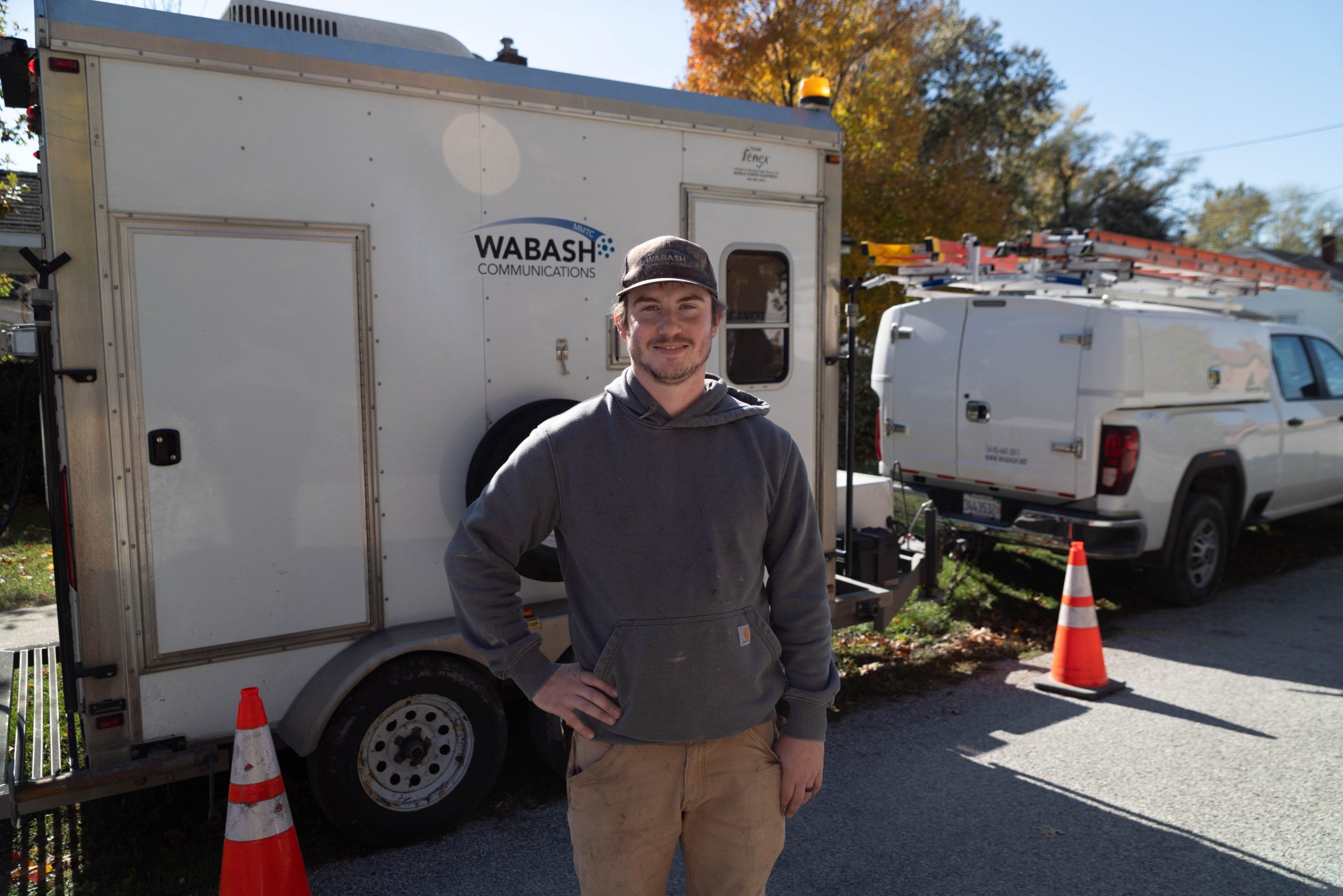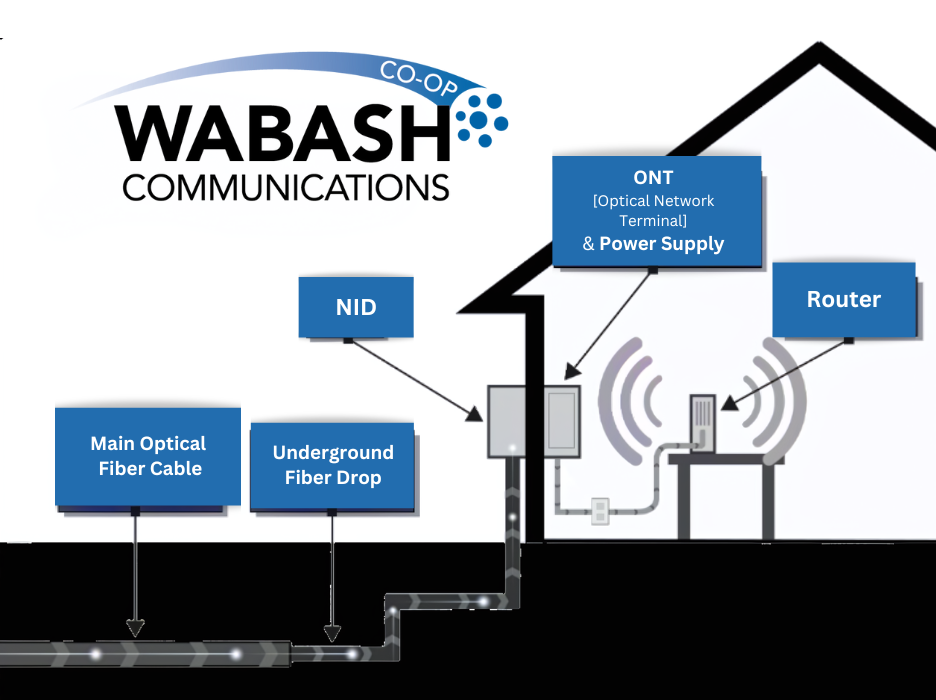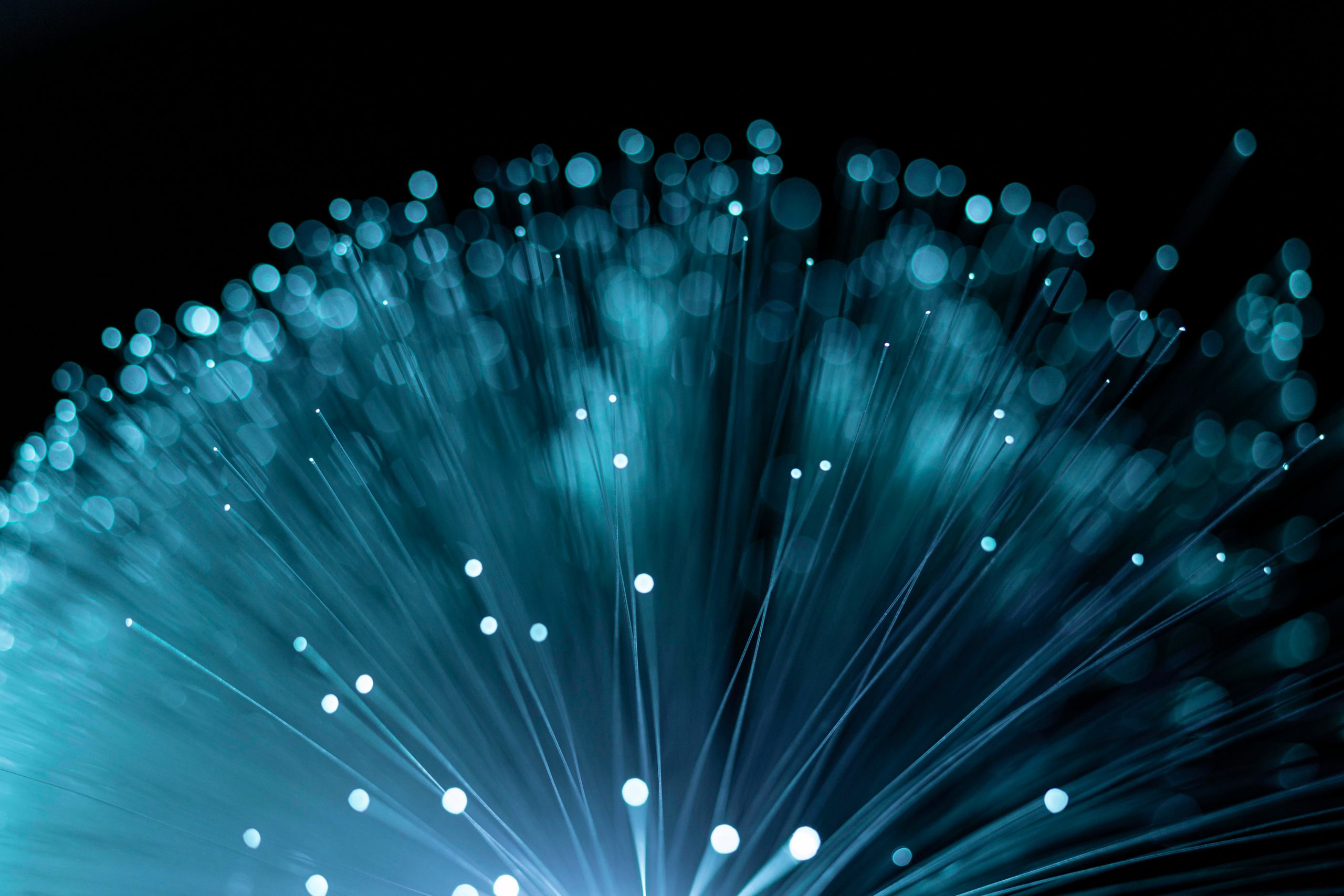Discover your address in our fiber construction area.
Search your address by using the form below
Connect all your devices with Wabash Fiber Internet
Wabash fiber Internet ensures you have the bandwidth to connect all your devices simultaneously, regardless of how many you own.
• Ongoing Maintenance and Local Support
• No Contracts
• No Installation Fees
• No Construction Fees

The Building Process
To establish our network, we’re installing new fiber optic cables underground. Consider the extensive network of streets in your area or even just your neighborhood. We’re tasked with laying hundreds of miles of fiber – a significant undertaking, one foot at a time.
Before we can commence laying fiber or bringing in construction equipment, we must map out existing infrastructure, including wires, pipes, water lines, electric lines, and sewers. A dedicated team of engineers and surveyors takes to the streets to ensure no detail is overlooked, a process that may span weeks or even months.
Additionally, considerable effort goes into crafting a comprehensive construction plan and liaising with local authorities for permits and other logistical considerations. Upon qualification of a zone for fiber service, further design, engineering, and staking work are required.
Once we’ve solidified a detailed plan encompassing diagrams, maps, and specifications for every project element, construction can begin. This phase involves crews working in the streets with their trucks, boring machines, and supplies of conduit and fiber.
We adhere strictly to the required process for marking utility locations, aiding our construction crews during excavation. You may notice markings in orange, blue, red, or yellow on sidewalks, streets, or even on your lawn – these signify utility locations.
Private Property Access
Our franchises, authorized by either state or local governments, grant us the privilege to construct our network within public rights-of-way and easements within a designated jurisdiction. In instances where necessary, we also obtain separate permissions to build on private properties, including multi-family apartment buildings, gated communities, or along private roads.
Navigating the Climate
Even in optimal conditions, certain factors beyond our control can impede progress, notably weather—often in abundance. While we strive to maintain operations regardless of weather, there are occasions when it becomes impractical. Consider the timing of road construction: it’s typically more prevalent in spring and summer, coinciding with favorable weather conditions, while snowy or rainy days often halt such activities. This weather-dependent pattern extends to fiber construction as well, with inclement weather significantly slowing or halting progress.
Furthermore, daylight limitations pose another challenge. Construction permits often restrict the days of the week and times of day during which crews can work. While we may have sufficient manpower to extend working hours or operate on weekends, adherence to local regulations is important.
Home Installation
To establish our network, we’re installing new fiber optic cables underground. Consider the extensive network of streets in your area or even just your neighborhood. We’re tasked with laying hundreds of miles of fiber – a significant undertaking, one foot at a time.
Before we can commence laying fiber or bringing in construction equipment, we must map out existing infrastructure, including wires, pipes, water lines, electric lines, and sewers. A dedicated team of engineers and surveyors takes to the streets to ensure no detail is overlooked, a process that may span weeks or even months.
Additionally, considerable effort goes into crafting a comprehensive construction plan and liaising with local authorities for permits and other logistical considerations. Upon qualification of a zone for fiber service, further design, engineering, and staking work are required.
Once we’ve solidified a detailed plan encompassing diagrams, maps, and specifications for every project element, construction can begin. This phase involves crews working in the streets with their trucks, boring machines, and supplies of conduit and fiber.
We adhere strictly to the required process for marking utility locations, aiding our construction crews during excavation. You may notice markings in orange, blue, red, or yellow on sidewalks, streets, or even on your lawn – these signify utility locations.

Order of Installation
Every now and then, one or two homes on a street may experience delays in installation, occurring weeks or even months after the rest of the street has been serviced. Understandably, this situation can cause confusion among residents, and we truly value your patience throughout the process. Several factors could contribute to this delay:
• Property access may be an issue. Sometimes we can’t get onto the property for some reason.
• Unforeseen circumstances can arise. We wish we could prepare for every unexpected obstacle, but sometimes there are unique conditions at a particular address that affect our ability to install Wabash Fiber.
F.A.Q.
Wabash Fiber represents cutting-edge fiber optic infrastructure, delivering fiber service directly to your home or business. Renowned as the pinnacle of modern technology, it’s often described as “future-proof.” With fiber, you can enjoy ultra-fast Internet connections of up to 2 Gig, along with advanced entertainment options and local phone service.
Just like any utility, investing in robust and reliable infrastructure offers significant value to the community and its residents. Introducing fiber connectivity to your community yields substantial benefits for both households and businesses. It facilitates the seamless transfer of large files over the internet, such as medical images or multimedia content. Additionally, a fiber infrastructure levels the competitive field or small, rural communities, enabling them to compete with larger urban areas.
Because each build out varies by size and location, we strategize by building fiber in different zones of a community, with the intention of a complete overbuild of that community over a planned timeline. Our actual construction plans will be based on the interest we receive from each neighborhood zone. Once a neighborhood zone reaches the required sign-up level, your zone will then have fiber built to it.
Wabash Communications offers a range of services across all of our service areas. You can search available services by visiting https://wabash.net/residential/internet/
After we have reached our commitment requirements for a prospective Fiber build, we will begin plans for construction on your fiber network! That’s why it’s important for you and your neighbors to show your interest in fiber!
The main difference between DSL, copper, wireless and fiber Internet is the connection it is delivered through. With cable and DSL Internet, distance can be a problem. The longer the wires are, the worse your signal could get. If multiple people are using the Internet at the same time, your speed may be slowed. Wireless Internet delivers your signal via line-of-sight. If the signal is obstructed by structures or trees, the speed you can subscribe to may be reduced or unavailable.
After we have reached our commitment requirements for a prospective Fiber build, we will begin plans for construction on your fiber network! That’s why it’s important for you and your neighbors to show your interest in fiber!
Fiber transfers data at a faster rate than any other connection. That means faster load times, higher-quality streaming and less buffering. Fiber also offers symmetrical download and upload speeds. That means that you’ll enjoy the same speed whether you are downloading a movie or sending out a large file.
Fiber optic is the fastest and most reliable Internet option available. It is not shared and provides far greater speeds to enhance your experience. If you use the Internet in any way and have the opportunity to sign up for fiber, you should!




